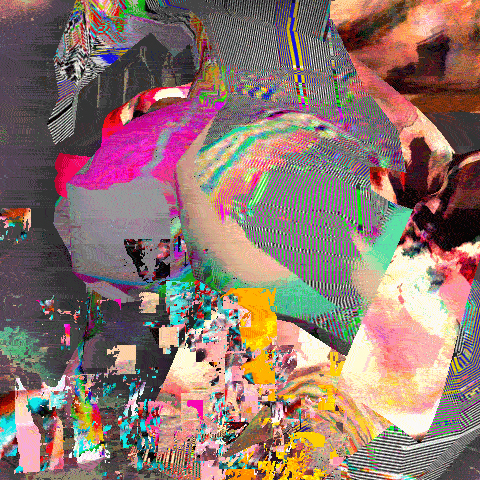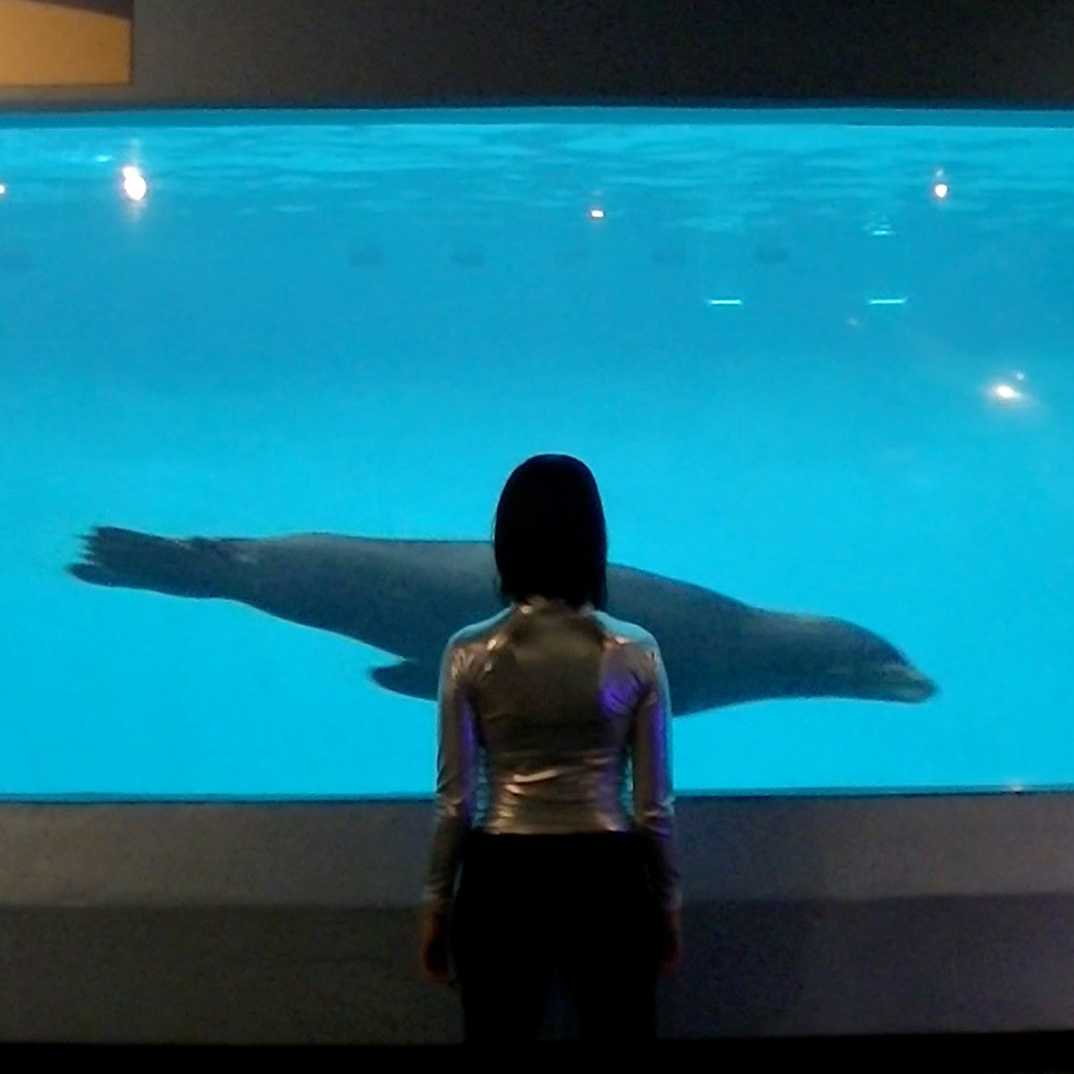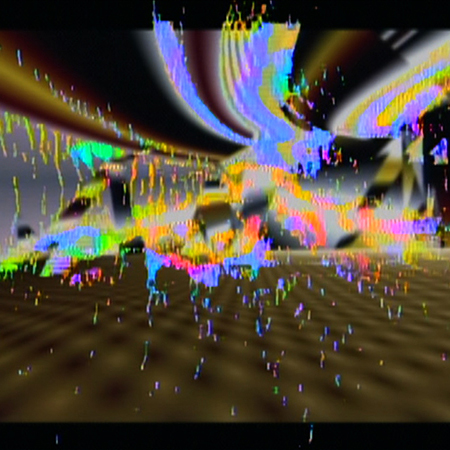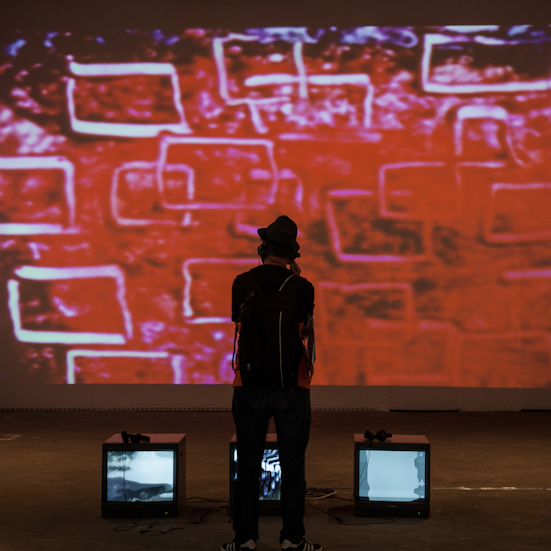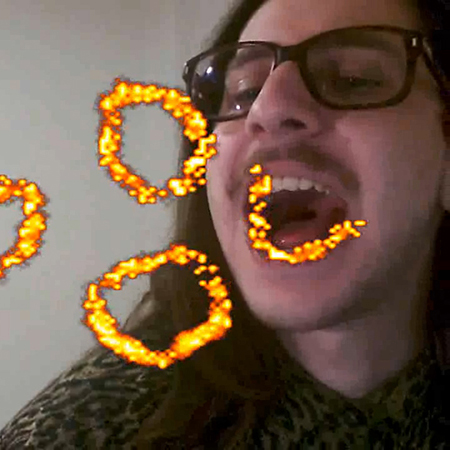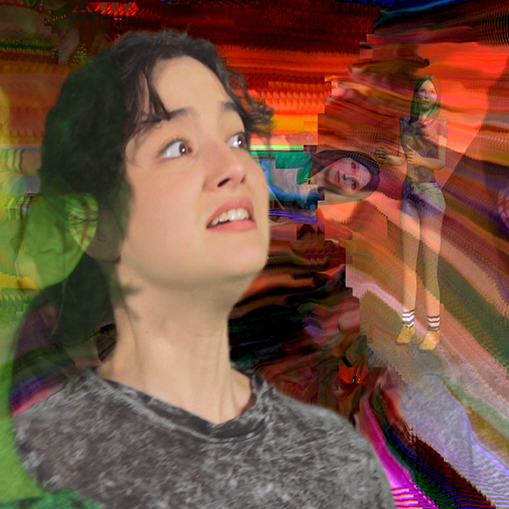The Music Video Show
Video killed the radio star and MTV killed itself. Using a loose definition of the genre, The Music Video Show offers a playlist of artist-made music-driven projects from past to present and across different media.
ARTISTS PETER GLANTZ AND HAYLEY MORRIS IN PERSON!
Artists: Max Almy, Sadie Benning, Bruce Conner, Carrie Gates, Peter Glantz, Ada Karczmarczyk, Laura Hyunjhee Kim, Jodie Mack, Norman McLaren, Hayley Morris, RAFiA, Hirad Sab, Yoshi Sodeoka
Tracks by: Bikini Kill, Devo, David Byrne & Brian Eno, Yung Pharaoh, USA is a Monster, Ada Karczmarczyk, Laura Hyunjhee Kim, Jodie Mack/The Shirelles, Hilary Hahn and Hauschka, RAFiA, Ash Koosha, Yoshi Sodeoka and Daron Murphy
Perfect Leader, Max Almy, 1983, video to digital video, 4:11 min
Produced to coincide with the 1984 Presidential Campaign, Perfect Leader is a cautionary tale that brings to life a prototypical politician, as packaged by Madison Avenue. With a driving soundtrack and bold visuals, Almy satirically presents this dynamic simulation of media politics as a fast-paced music clip. The narrator is a disembodied Big Brother, an Orwellian computer program who creates candidate images—dictator, evangelist, moderate—as models for a mass-marketed leader. The image of the potential president is overlaid with graphic symbols of multinational power: technology; economics; warfare. As a woman hysterically intones, “We’ve got to have a perfect leader,” the bland, telegenic candidate is brought into two dimensions on the TV screen. Concise as a commercial, insistent as a pop song, Perfect Leader is Almy’s most effective use of television techniques to critique the impact of the media on contemporary life.
Girl Power, Sadie Benning, 1992, pixelvision to digital video, 15 min
Set to music by Bikini Kill (an all-girl band from Washington), Girl Power is a raucous vision of what it means to be a radical girl in the 1990s. Benning relates her personal rebellion against school, family, and female stereotypes as a story of personal freedom, telling how she used to model like Matt Dillon and skip school to have adventures alone. Informed by the underground “riot grrrl” movement, this tape transforms the image politics of female youth, rejecting traditional passivity and polite compliance in favor of radical independence and a self-determined sexual identity.
America is Waiting, Bruce Conner, 1981, 16mm to digital video, 3:53 min
Mongoloid, Bruce Conner, 1977, 16 mm to digital video, 3:41
Bruce Conner’s music videos are credited as prefiguring MTV, which was founded in 1981. As an avant-garde filmmaker and artist, Conner’s videos bring experimental tactics such as found footage and flicker to the new mainstream of televised music videos. Marked by fast cutting to the beat, bold colors, and surrealist juxtapositions, Conner’s aesthetic legacy helped to define the early 80’s moment and continues to influence today.
Chlorophillinhale, Carrie Gates, audio by Yung Pharaoh (aka Kevin Carey), 2014, digital video, 2:13 min
In Chlorophillinhale, Carrie Gates alternately builds up layers and travels through them in step with Yung Pharaoh’s track. The imagery is reminiscent of being too close to an object in a three-dimensional game like Second Life in which the pattern of that object is stretched over the entire screen. Chlorophillinhale moves through an abstract landscape formed by distinctly digital distortions of natural elements.
No More Forever, Peter Glantz, 2009, digital video, 8:10 min
No More Forever tells the tale of the band USA Is A Monster performing at a gathering in the forest. They are recorded by filmmaking lemurs who broadcast the results to the entire forest community and finally beyond time and space.
Illustrated by Kevin Hooyman. Animated and Directed by Peter Glantz. Lyrics inspired by Chief Joseph of the Nez Perce tribe. Produced by The Imaginary Company. Supported in part by a grant from the Rhode Island State Council on the Arts.
Niszcz szatana Łaską Pana (Smash satan’s Face with God’s Grace), Ada Karczmarczyk, 2014, digital video, 3:28 min
Smash satan’s Face with God’s Grace is one of the evangelical pieces created by multimedia artist Ada Karczmarczyk in order to promote religious messages via YouTube. The music puts the viewer into a dark mood and creates anxiety with its electro-gothic style while the lyrics suggest that the tools to fight the devil are good deeds, virtues and uplifting values. Video of a heart-encrusted hammer hitting whack-a-devil in an arcade emphasizes the message.
SHARING IS CARING, Laura Hyunjhee Kim, 2012, digital video, 2:33 min
Referring to the anonymous communities built through social media networks (such as Facebook, Tumblr and Twitter), SHARING IS CARING remixes found-gifs highlighting the circulation of individual stories and questioning the relationships within the digital net space.
Unsubscribe #4: The Saddest Song in the World, Jodie Mack, 2010, 16mm to digital video, 2:45 min
In the Unsubscribe series, Jodie Mack takes apart and reassembles junk mail into playful formalist compositions. The Saddest Song in the World is paired with the artist’s own re-recorded version of The Shirelle’s “Will You Still Love Me Tomorrow?” Junk mail hearts are formed and break just as easily.
Synchromy, Norman McLaren, 1971, 16mm to digital video, 7:27 min
This animated short by Norman McLaren features synchronization of image and sound in the truest sense of the word. To make this film, McLaren employed novel optical techniques to compose the piano rhythms of the sound track, which he then moved, in multicolor, onto the picture area of the screen so that, in effect, you see what you hear.
Bounce Bounce, Hayley Morris, 2012, digital video, 2:50 min
The official music video for “Bounce Bounce” by grammy award winning violinist Hilary Hahn and experimental pianist Hauschka. “Bounce Bounce” is a stop-motion animated video inspired by the vibrant life found within tide pools. The video was made completely by hand using found objects, fabric, paper, yarn drift wood and clay to create a world brought to life by music.
DEAR DiARY, RAFiA, 2015, digital video, 4:47 min
DEAR DiARY is a musical journal entry that details the cyclical symptoms of RAFiA’s depression. It develops into an unrequited love note turned shouting match toward toxic masculinity under which she is persistently gaslit, underestimated, and ignored.
GUUD, Hirad Sab, 2015, digital video, 2:24 min
In Hirad Sab’s video for Ash Koosha’s song “Guud,” trees without leaves sway to the music and impossible liquid and vapor structures subtly pulsate. As we slowly rotate through a zero gravity environment, a human figure emerges from the liquid making body and beat indistinguishable.
Devils Reign, Yoshi Sodeoka, audio remixed by Daron Murphy, 2011, digital video, 4:41 min
Devils Reign is part of the music-video album Distortion III, a quartet of psychedelic visions paired with music. Sodeoka’s visuals are aggressive—pulsating colors and images coming towards the viewer—while also managing to be hypnotic. Like a striped rotating spiral, the video ripples out towards the viewer like grooves on a record only to be shattered by appropriated actors distorted beyond recognition.


